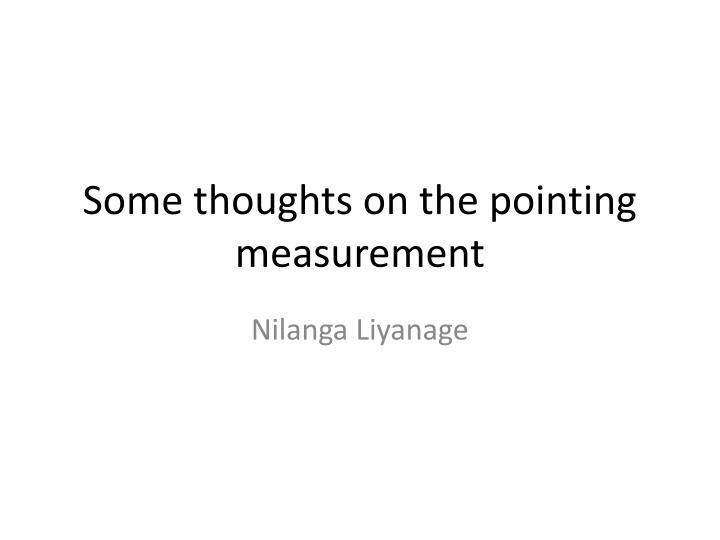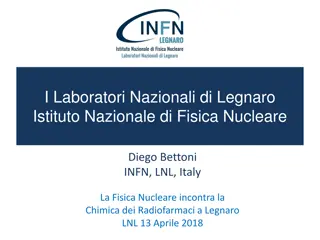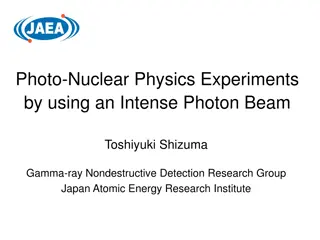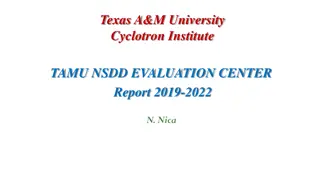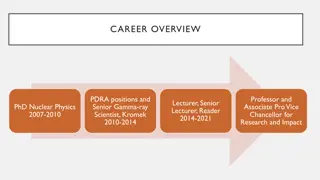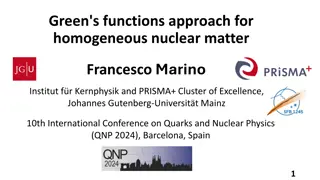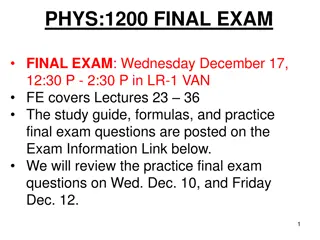Investigation on Pointing Measurement Challenges in Nuclear Physics
Exploring the intricacies of pointing measurements in nuclear physics research, focusing on achieving precise angle measurements for spectrometers. The analysis delves into measurement accuracies, cancellation of systematic errors, and strategies for addressing challenges in separating elastic scattered energies. Various experimental setups and target materials are discussed, showcasing the quest for high precision in determining spectrometer angles amidst complex nuclear interactions.
Download Presentation

Please find below an Image/Link to download the presentation.
The content on the website is provided AS IS for your information and personal use only. It may not be sold, licensed, or shared on other websites without obtaining consent from the author.If you encounter any issues during the download, it is possible that the publisher has removed the file from their server.
You are allowed to download the files provided on this website for personal or commercial use, subject to the condition that they are used lawfully. All files are the property of their respective owners.
The content on the website is provided AS IS for your information and personal use only. It may not be sold, licensed, or shared on other websites without obtaining consent from the author.
E N D
Presentation Transcript
Some thoughts on the pointing measurement Nilanga Liyanage
Q2 Measurements Beam Dump e- 0 tg Central sieve slit hole Point of reference for spectrometer angle Center of the spectrometer or Central sieve slit hole Target e- 2
Q2 Measurements Spectrometer Angle Measurement Survey: accuracy ~ 0.8 mrad (1% for PREX) Pointing Measurement: E-Ex(1+Ex ) Nuclear Recoil Energy 2Mt E'= 1+2Esin2(q /2) Mt Use watercell target (with several central momentum settings), find the separation in elastic scattered energies of 16O and 1H. Find the spectrometer angle using the least squared method 3/28/13 3
Pointing measurement with H and a heavy nucleus in the same target Most systematics cancel in the difference: Energy loss in target Bean energy shifts Beam position shifts
Challenges For the kinematics of PREX the separation between the two elastic peaks is only about 4 MeV; a 1% measurement of angle requires measuring this separation to < 40 keV accuracy Small H peak sitting on the sloping radiative tail of Oxygen; need a simulation and a careful peak fit to get the separation right.
Q2 Measurements Pointing Measurement 88.4 0.35 mrad LHRS 86.1 0.35 mrad RHRS 0.0890 0.0885 0.0880 Angle (rad) 0.0875 0.0870 Analysis Values 0.0865 Survey Values 0.0860 0.0855 0.0850 LHRS RHRS 0.0845 Spectrometer 6
In general the absolute momentum accuracy of the HRS ~ 10-4 : 100 keV But we can measure momentum differences with better accuracy over small momentum ranges. Luckily we can verify this in the 4-10 MeV range using the elastic states of 12C Achieved the required < 40 keV accuracy for PREX-I
Issues with different targets Water-foil: Small H peak Fe elastic peak next to oxygen, need to separate. LiH powder sandwiched between steel foils : H, Li and Fe peaks well separated 3 foils for calculation instead of 2 optimize the amount of power to window thickness Mixed gas target: H and Ar (?) or Xe Can mix gas so that the two peaks are about the same. But effects due to extended target (range of angles): different angular variations for the two nuclei average angle is different for the two, need to simulate carefully. Can use a software cut to make a thin target: 1 cm (?) But how long we need to run to get enough stats. with this cut ?
